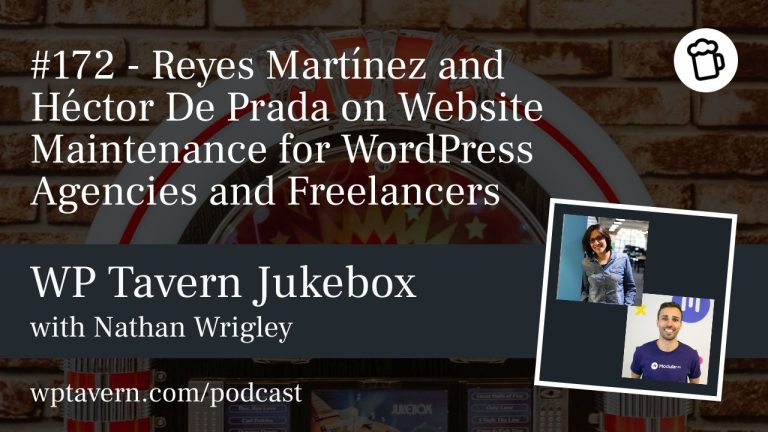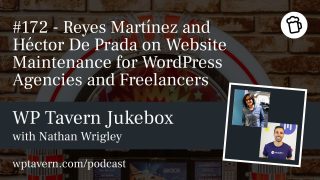Nathan Wrigley introduces Jukebox, WP Tavern’s WordPress-focused podcast, and welcomes guest Wes Tatters. Wes has nearly 40 years in tech, starting with early machines like the Commodore 64 and TRS-80. He’s been an author on internet technologies, worked in AV and media, and now leads Rapyd Cloud, a globally distributed hosting company. His background includes building communities on CompuServe, AOL, and MSN and close engagement with open source platforms like WordPress.
Wes begins by recalling the earliest days of online connectivity when modems and bulletin boards were exotic. He explains that DARPA’s original goals — building a resilient communications network — seeded the internet’s architecture, enabling later transparency between disparate systems. He contrasts the early, expensive satellite-based television interviews with today’s instant web conversations, noting how even simple delays and “dump buttons” were once engineered with satellite roundtrips.
Wes found his path into technology early, programming rather than just playing games. He landed at an IT firm in Australia and gained access to systems like Wang Microsystems. The incremental speed improvements from 300 baud to 56k felt transformative because they let him reach beyond Australia and connect with global communities through CompuServe and other services. Those bulletin-board-style forums enabled discussions and relationships that opened opportunities, like being contacted by Mark Tabor at Simon & Schuster to write books. Wes co-authored guides on connecting CompuServe to the internet and later wrote several Netscape books.
He remembers the formative excitement around Netscape and the birth of JavaScript. Netscape invited Wes to document features that were still being built; he and his editor produced the first JavaScript Developers Guide, even though the language’s eventual impact wasn’t obvious at the time. Wes also recounts meeting luminaries like Tim Berners-Lee and James Gosling at early web conferences. He shares a light anecdote about the “shoe library” at a worldwide web conference — even pioneers like Tim Berners-Lee happily posed for playful projects — highlighting how small and exploratory the web community once was.
Nathan asks about the turning points when the internet shifted from niche to mainstream. Wes identifies Windows 95 and Microsoft’s MSN as watershed moments: suddenly, people with a modem could get online without university access. MSN implemented early community features and moderated forums tied to television shows; Wes curated some of these efforts in Australia. Those experiences show how community-centric design was embedded in early consumer services, even if they later evolved into more closed, commercial systems.
Wes explains that parallel efforts shaped the content-management landscape. Microsoft’s ASP and DotNetNuke were early CMS-like platforms, while WordPress began as a blogging tool. The crucial shift WordPress enabled was democratizing website ownership: people could publish without coding skills and retain control of their content. Open source and extensibility — anyone could write a plugin or theme — let hosting companies, theme vendors, and independent creators participate and commercialize within an open ecosystem. That openness aligned with broader values of free expression and ownership.
Wes notes real-world examples of WordPress’s community power: BuddyBoss and private social platforms built on WordPress allowed groups to communicate safely during COVID, for instance enabling doctors and frontline workers to share information away from public social networks. That ownership of raw data and control over community spaces is a distinctive strength.
The conversation shifts to the internet’s broader social effects. Nathan and Wes reflect on how the web can be the greatest human innovation but also a source of harm. Wes points to loneliness data and the “false community” phenomenon: many online relationships are shallow, leading to a sense of isolation. The always-on mobile experience, designed for scrolling and short bursts of attention, contributes to dopamine-driven behaviors and mental-health challenges. Newer platforms prioritize rapid consumption — TikTok-style video, ephemeral snaps — which can undermine deeper communal bonds.
Wes discusses Tim Berners-Lee’s vision of the semantic web with structured metadata and how that ideal didn’t fully materialize; instead, search engines like Google prioritized discoverability and indexing. The rise of AI then layered new capabilities on top of that indexed web: tools like ChatGPT can summarize, plan, and create content within seconds, changing how businesses and creators work. Wes gives examples of rapid AI-generated video and business plans, underscoring the exponential change in capability and accessibility.
They tackle whether the internet has taken a wrong turn. Wes concedes missteps, especially around younger generations’ modes of consumption and the commercialization of social platforms. However, he emphasizes the internet’s capacity to self-correct — a property inherited from DARPA’s design for redundancy and resilience. Communities tend to moderate and course-correct when they reach critical mass, and open-source ecosystems often renew themselves through contributions and new conversations.
WordPress’s community has faced internal schisms and drama, but Wes frames these conflicts as opportunities for reflection and growth. He points out that controversy can spur new dialogues about contribution, governance, and community health. Events like PressConf and WordCamps bring people together to listen, discuss, and contribute, and many participants discover the voluntary labor and local actions that sustain open source. Wes argues the community should spend time listening to diverse voices, then act to self-correct.
Wes also describes Rapyd Cloud’s distributed, remote-first team and the global nature of their customer base. He works hours that align with North American and European time zones, reflecting the global rhythms of hosting and support. This operational model mirrors the internet’s ability to connect people and enable remote collaboration across time zones.
The episode closes with Wes’s hopeful outlook: despite challenges — loneliness, commercialization, misinformation, and rapid technological change — the bedrock of community remains. WordPress’s openness and the broader internet’s flexible architecture allow people to create ownership, reclaim conversations, and build spaces that align with collective values. Wes encourages continued listening, community involvement, and contribution as the way forward.
Nathan thanks Wes for the conversation, noting how the discussion traced the internet’s arc from early modems and community forums to modern AI and open-source platforms. Wes reiterates that conversation and community matter most.






